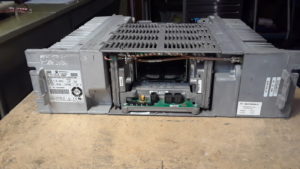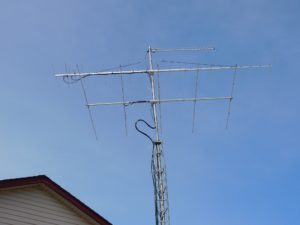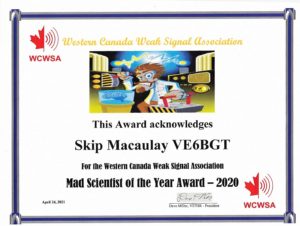- Home
- Registration
- Site Tools
- Articles
- Swap n Shop
- Contesting
- Grounding information for everyone
- History of the Central Alberta Amateur Radio Club
- CAARC owned Repeaters
- Club Repeater Info
- GMT Time Conversion Table
- VE/VA6 Incoming QSL Bureau
- Pine Lake Tornado Friday July 14, 2000.
- Amateur Radio to the Rescue
- CANWARN
- HAM Nation with Bob Heil K9EID
- Net info
- Events.
- ARES
- Links and On line study course.
- Field Day 2019
- Members D/L
- Forum/Swap and Shop
General News
Field Day Update.
Jul 5th
Thank you to all the hams for your help and participation in field day. The bands were wide open and operating conditions from the new site were excellent. We made just over 200 contacts. Everyone worked together to make field day a success. I will be adding a gallery of photos as soon as I receive them. If you have any photos please send them to me. We will be posting the total score submitted soon. Thanks again.
73 Bob VE6BLD
Temporary Rule Waivers for ARRL Field Day 2021:
Jun 9th
Temporary Rule Waivers for ARRL Field Day 2021:
For Field Day 2021 only, Class D stations may contact all other Field Day stations, including other Class D stations, for points. Class D and Class E stations are limited to 150 Watts PEP. (See Field Day rule 4.6)
- Eligibility: Field Day is open to all amateurs in the areas covered by the ARRL/RAC Field organizations and countries within IARU Region 2. DX stations residing in other regions may be contacted for credit and may submit entries as check-logs.
- Object: To work as many stations as possible on the 160, 80, 40, 20, 15 and 10 Meter HF bands, as well as all bands 50 MHz and above, and in doing so to learn to operate in abnormal situations in less than optimal conditions. A premium is placed on developing skills to meet the challenges of emergency preparedness as well as to acquaint the general public with the capabilities of Amateur Radio.
- Date and Time Period: Field Day 2021 will be held June 26-27. Field Day is ALWAYS the fourth full weekend of June, beginning at 1800 UTC Saturday and ending at 2059 UTC Sunday.
3.1. Class A and B (see below) stations that do not begin setting up until 1800 UTC on Saturday may operate the entire 27-hour Field Day period.
3.2. Stations who begin setting up before 1800 UTC Saturday may work only 24 consecutive hours, commencing when on-the-air operations begin.
3.3. No class A or B station may begin its set-up earlier than 0000 UTC on the Friday (Thursday afternoon or evening local time) preceding the Field Day period. Cumulative set-up time shall not exceed a total of 24 hours.
- Entry Categories: Field Day entries are classified according to the maximum number of simultaneously transmitted signals, followed by a designator indicating the nature of their individual or group participation. The minimum number of transmitters that must be claimed is one (1). Twenty (20) transmitters maximum are eligible for the purpose of calculating bonus points (2,000 points maximum). However, additional transmitters which may legitimately be used simultaneously will determine your entry category classification, but will not earn additional bonus points (i.e. 22 transmitters = 22A). The use of switching systems that allow for lock-outs in order to use multiple transmitters (i.e., an “octopusâ€) in an attempt to enter a lower-number-of-transmitters class are prohibited (i.e. using 2 transmitters that can transmit simultaneously, with two operators, and a lock-out system and entering class 1A). The use of simulcasting devices which allow a single operator to key and transmit on more than one transmitter at a time, is prohibited. Bonus stations, such as the GOTA station and satellite station do not count towards determining the number of transmitters for the class and do not qualify for transmitter bonus points.
4.1. (Class A) Club / non-club portable: Club or a non-club group of three or more persons set up specifically More >
NET CONROLLERS NEEDED!
May 9th
Hello everyone. We have lost one of our net controllers for the Monday night net, we are down to three. I am asking for anyone to please volunteer to help to be a net controller. If we get some new people it will not be a very big commitment for anyone. Running the Monday night net is very easy and it gives you great experience in case we have need for a net in an emergency. It is also a great way to meet local Hams and to help remember their names! We have a spread sheet you can use that will automatically fill in their name and location when you type their call in as they check in. To volunteer please send me an e-mail at
sparkyham(at)gmail(dot)com to volunteer for the net.
You can also just let me know by voice when you hear me on the QE repeater!
Thank you to the net controllers who run the net every Monday night.
73
Bob VE6BLD
CAARC Net Controller admin
RAC Presents CANWARN Spring Training Session: May 26
May 5th
RAC Presents CANWARN Spring Training Session: May 26
Click link below for more details
CANWARN (CANadian Weather Amateur Radio Network)


New VE6QE Repeater Radio
May 3rd
The club has purchased a few Motorola MTR2000 VHF repeaters to replace the very old and aging GE-2 radios that we have been using in all the repeater sites for around the last 30 years.. The old GE-2’s are great radios but the last time we tried to peak one up the capacitors on the xtal multiplier board just snapped off.. These old parts have seized solid on the circuit boards so it is time to upgrade I guess.. These new MTR2000 are not brand new but are more of the latest technology, every thing is set up by a computer and there is really now adjusting of parts anymore.. In order to be able to connect these units into our controllers I had to remove the old J5 interface connector and build a new circuit board for having things isolated between circuits.. This required unsoldering a 96 pin plug and then creating a new circuit board and drilling the 96 holes into it for the plug to resolder into, that was fun I tell you…
 Front cover removed to show laptop and other connections.
Front cover removed to show laptop and other connections.
 New Interface board with the 96 pin connector..
New Interface board with the 96 pin connector..
In the next few days I will be going up to the repeater site to check for mounting and cable lengths that need to be built. Then after that we will install it and see what happens. Stay tuned.. Skip, VE6BGT.
VE6BLD’s first try on an Electric Unicycle! TOO MUCH FUN!
Apr 27th
A few weeks ago I was at my son’s place in Okotoks and he helped me try his new Electric Unicycle. It was a very cold and windy day but after 3 tries I managed to go a few hundred feet! What a blast!
Click these links for my 3 best tries…
Dad’s 2nd Good Ride on Michael’s EUC This would be easier on a flat lawn with no wind!!
I may have to get one of these..

New tower and antenna
Apr 18th
Antennas finally up on the new tower. Many thanks to Rod ve6roh,Jim ve6jhk,Bob ve6bld and Tom va6ta for all the expert assistance. Top antenna is a 24 element looper for 1296,below is the new 2m – 70cm Dual Band EME Yagi Antenna PA144-432-34-6-2CBGP Two Separate Connectors followed by the Cushcraft 5 element for 6.Once again thank you to the guys from the Red Deer area for all your help. Bob va6zo.
World Amateur Radio Day
Apr 14th
|
||||
|







 On Sunday, April 18, 2021, Radio Amateurs of Canada is organizing a special on-air event to celebrate World Amateur Radio Day.Every year on April 18, Radio Amateurs worldwide take to the airwaves in celebration of Amateur Radio and to commemorate the formation of theÂ
On Sunday, April 18, 2021, Radio Amateurs of Canada is organizing a special on-air event to celebrate World Amateur Radio Day.Every year on April 18, Radio Amateurs worldwide take to the airwaves in celebration of Amateur Radio and to commemorate the formation of the 